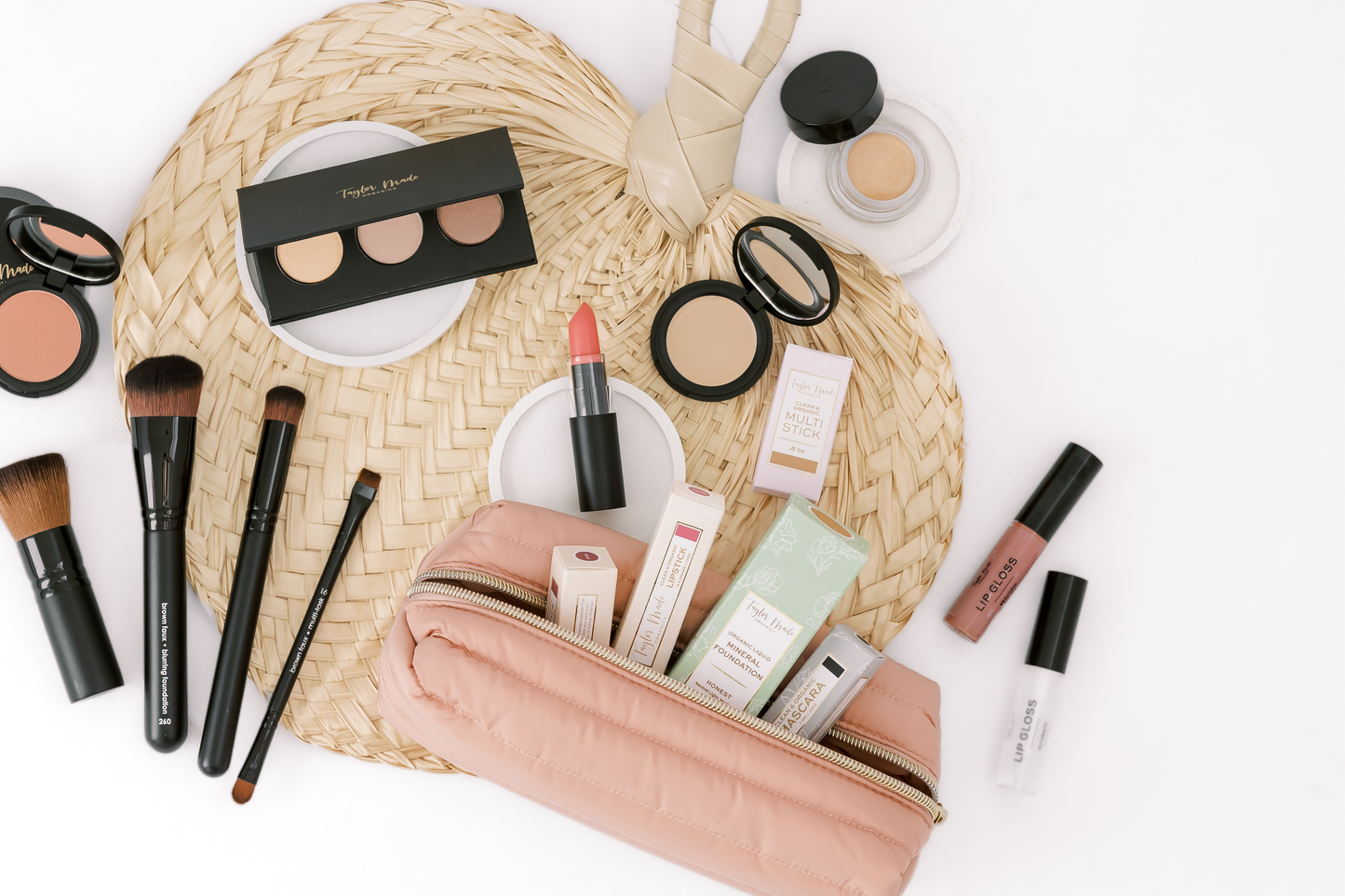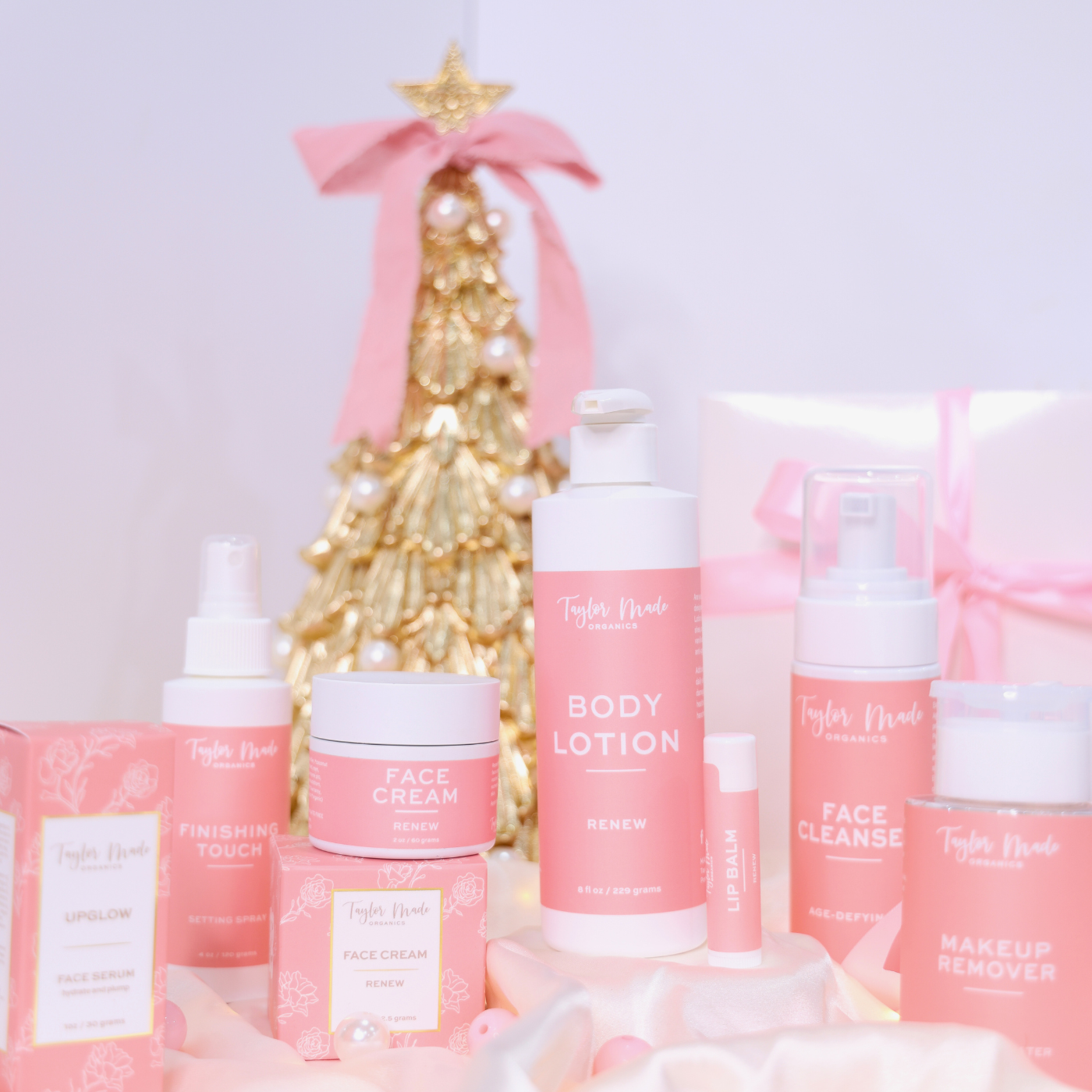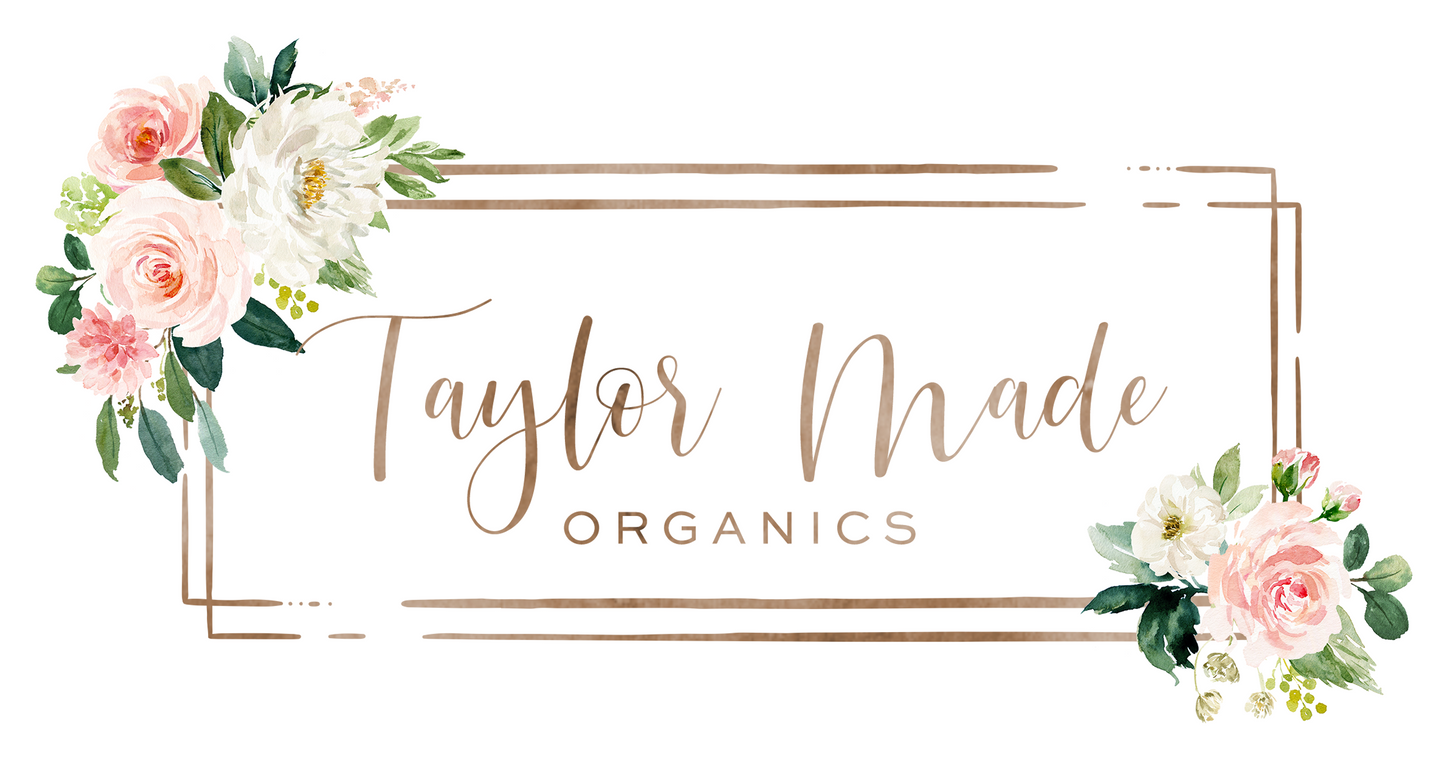A Christmas gift anyone would love! *exclusions apply

Hidden Hormone Disruptors in Your Makeup: Are You Putting Your Health at Risk?
We all want to look and feel our best, and skincare and makeup play a big role in that. But what if the very products we use to enhance our beauty are actually harming our health? It's a scary thought, but the truth is, many conventional products contain hormone disruptors – chemicals that can interfere with our endocrine system and potentially lead to a host of health problems.
What are Hormone Disruptors?
Hormone disruptors, also known as endocrine disruptors, mimic or interfere with the body's hormones. They can disrupt normal hormonal functions, potentially leading to developmental problems, reproductive issues, increased risk of certain cancers, and other health concerns. Because hormones play such a crucial role in our overall health, even small disruptions can have significant consequences.
What are Xenoestrogens?
Xenoestrogens are a specific type of hormone disruptor that mimics estrogen. Because they bind to estrogen receptors, they can disrupt the body's natural hormonal balance and potentially contribute to estrogen-related issues.
Common Hormone Disruptors Lurking in Your Skincare and Makeup Bag:
Here are some of the most common hormone-disrupting ingredients you might find in your products:
- Parabens (e.g., Methylparaben, Propylparaben, Butylparaben): These preservatives are widely used but have been linked to estrogen-like effects.
- Phthalates (e.g., Dibutyl phthalate (DBP), Diethylhexyl phthalate (DEHP)): Often found in fragrances and nail polish, phthalates are known hormone disruptors linked to developmental and reproductive issues. Be wary of "fragrance" as an ingredient, as it can often hide phthalates.
- Formaldehyde-Releasing Preservatives (e.g., DMDM Hydantoin, Diazolidinyl Urea, Imidazolidinyl Urea): These chemicals slowly release formaldehyde, a known carcinogen and potential hormone disruptor.
- Oxybenzone and Octinoxate: These common UV filters can be absorbed through the skin and have been shown to disrupt hormone activity.
- Triclosan: An antibacterial agent sometimes found in cosmetics, triclosan has been linked to thyroid hormone disruption and antibiotic resistance.
- Perfumes and Fragrances: These can hide a multitude of chemicals, including phthalates and other hormone disruptors. Look for fragrance-free options or products scented with essential oils (though be mindful of potential allergies).
- PEGs (Polyethylene Glycols) and PPGs (Polypropylene Glycols): These are used as emulsifiers, thickeners, and solvents. They can be contaminated with 1,4-dioxane, a probable carcinogen, and can also increase skin permeability, potentially allowing other harmful chemicals to be absorbed more easily.
- Synthetic Dyes (e.g., FD&C and D&C dyes): Many synthetic dyes are derived from petroleum and coal tar and some have been linked to health problems. Look for natural colorants instead.
- TEA (Triethanolamine), DEA (Diethanolamine), and MEA (Monoethanolamine): These are pH adjusters that can react with other ingredients to form nitrosamines, which are potential carcinogens.
- Talc: This mineral is often used as a filler in makeup. Concerns have been raised about potential links between talc and ovarian cancer, particularly in products used in the genital area.
- Bismuth Oxychloride: Used to give a shimmery or pearlescent effect, bismuth oxychloride can be irritating to the skin and eyes, and some people may experience allergic reactions.
- Glycol (e.g., Propylene Glycol, Butylene Glycol): Used as humectants and solvents, glycols can be irritating to the skin, especially for those with sensitive skin or conditions like eczema.
How to Protect Yourself:
- Read Labels Carefully: Become a label detective! Look for the ingredients listed above and choose products that are free of them.
- Choose Natural and Organic: Opt for products that are certified organic or made with natural ingredients. These products are less likely to contain harmful chemicals.
- Minimize Your Use of Conventional Products: Consider simplifying your routine and using fewer products overall.
- Support Brands Committed to Transparency: Look for brands that are open about their ingredients and prioritize safety.
- Do Your Research: Use resources like the Environmental Working Group's Skin Deep database to research the safety of specific products and ingredients.
Your Health is Worth It:
Making the switch to cleaner, hormone-disruptor-free skincare and makeup may require a little extra effort, but your health is worth it. By being informed and making conscious choices, you can protect yourself from the potential dangers of these hidden chemicals and embrace a more natural approach to beauty.



